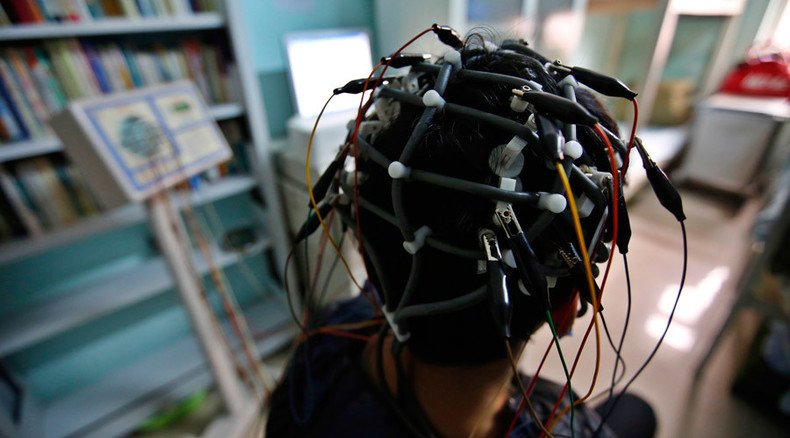Paralyzed man walks in 1st-ever proof direct brain control possible

A proof-of-concept study has just achieved monumental success: researchers in California got a paralyzed man’s legs to move, proving it’s possible to stimulate certain brain centers and make them work again.
They achieved this by using an electroencephalogram (EEG) machine, fashioned with wires. One end was connected to the brain centers in question. At the other, the signals sent by the brain arrived at electrodes attached to the paralyzed muscles. The result was an astounding success and is only the beginning of further research into brain control.
Mild electric brain stimulation boosts creativity, may tackle depression http://t.co/BxDyuCSOgepic.twitter.com/3DxpjwUhlh
— RT (@RT_com) April 20, 2015With the aid of the system, the man – a paraplegic with a spinal cord injury – was able to walk nearly four meters.
This proves that it’s not the years spent paralyzed that matters most, but the brainwaves still exerted by the brain, even when the connection to the limbs has been severed.
"Even after years of paralysis the brain can still generate robust brainwaves that can be harnessed to enable basic walking. We showed that you can restore intuitive, brain-controlled walking after a complete spinal cord injury. This non-invasive system for leg muscle stimulation is a promising method and is an advance of our current brain-controlled systems that use virtual reality or a robotic exoskeleton,” Dr. An Do, one of the lead researchers on the study from University of California in Irving, said.
In order to prepare the brain to function again in this way, the patient needed to stimulate the grey matter mentally first, which was done with the aid of virtual reality by making the person control a character in a computer environment.
READ MORE: Eureka! Researchers conduct first direct brain-to-brain communication over the internet
Next came the leg training, to get the muscles into shape to walk again, followed by a practice walk 5cm above the ground, without any pressure on the muscles.
It took the patient 20 sessions before this preparation translated into results. Each visit over 19 weeks saw new progress.
Now that the technique has been shown to work with one patient, the researchers are looking forward to further studies involving whole groups of people suffering from paraplegia.
Russian start-up to clinically test first human exoskeleton http://t.co/iGPigaq9Kkpic.twitter.com/5z6zqNIOjl
— RT (@RT_com) April 16, 2015Lead researcher Dr. Zoran Nenadic is looking to the future.
“Once we’ve confirmed the usability of this non-invasive system, we can look into invasive means, such as brain implants. We hope that an implant could achieve an even greater level of prosthesis control because brain waves are recorded with higher quality. In addition, such an implant could deliver sensation back to the brain, enabling the user to feel their legs.”
The research has been published in the Journal of Neuroengineering and Rehabilitation.












